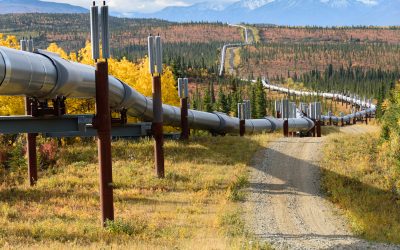Are cities destroying our nation’s watersheds? Growing cities that spill into rural areas and suck the water supply dry are a popular lament with environmentalists and politicians alike. It’s an argument Calgarians are hearing a lot lately. Stephane Dion says if he becomes prime minister he will use federal powers to protect the nation’s watersheds. And Ontario’s confiscatory Greenbelt Plan already uses provincial zoning powers to limit urban growth and thus shelter watersheds from sprawl.
Certainly no one should be getting their water for free. It’s a resource like any other and deserves to be priced accordingly. But the alleged crisis of urban expansion is actually having very little impact on the vast majority of our nation’s watersheds. If there is a crisis, it’s that worrying about watersheds may someday destroy our cities.
According to a report earlier this year from Statistics Canada, our country is home to 206 watersheds – the areas that drain rainwater into specific river systems. Categorizing watersheds by population density, just 27 are listed as very highly or highly urbanized. And more than two-thirds of Canada’s total population live inside these 27 watersheds.
That leaves the vast majority of Canadian watersheds free from any significant human presence. Almost 60% of the land mass of Canada (and 109 out of 206 watersheds) is home to a mere 275,000 residents, or less than 1% of the total population of the country.
Now if sprawl was a problem, you would expect to see our cities expanding beyond their existing watersheds and urbanizing new drainage basins. Yet Statistics Canada’s work shows that over the past 20 years, population growth has been contained to the few watersheds already identified.
The fact that additional watersheds are not falling prey to encroaching urbanization would seem to be good news. Yes, existing urban watersheds may be under some strain, but given that population growth is something of an inevitability, we should be able to save two birds with one stone, so to speak.
It would seem a simple matter to protect the environment and provide water to our growing cities by diverting some water from all these rural watersheds into urban drainage basins – especially when the majority of Canada’s fresh water runs north, where hardly anyone lives. Instead of moving people all over the country in search of new water supplies and threatening additional watersheds, wouldn’t it make more sense to keep the population centres where they are and move the water to them?
While such a plan might make sense from the point of view of logic and human need, prevailing environmental wisdom holds that watersheds are sacrosanct. Water must not be moved from one drainage basin to another. Every drop of water must follow its predetermined path: If a snowflake falls on the shores of Lake Abitibi, it must eventually find its way into James Bay and be turned into salt water and finally returning into precipitation. Hydrologic destiny must be preserved.
This “every drop is sacred” line of thinking is popular with groups such as the Sierra Club, which argues that there’s no such thing as surplus water anywhere. Every precious dram of the wet stuff is already being used by the fishes and the trees.
The same thought runs through Ontario’s Greenbelt Plan, the work of the International Joint Commission (IJC) on U.S./Canada boundary waters as well as the Great Lakes Charter agreement signed in 2005 by the eight Great Lakes states plus Ontario and Quebec, which virtually bans watershed diversions. Curiously, the IJC bolsters its case for stopping water diversions by declaring Great Lakes water to be “a nonrenewable resource,” contradicting Grade 5 science teachers across the continent who are presumably still teaching children about the water cycle. But the bizarre implications of the doctrine of hydrologic destiny go far beyond repudiating Grade 5 science.
Consider the fast-growing Region of Waterloo, Ont. This high-tech centre will eventually need to supplement local water supplies – the last two summers have seen severe water restrictions placed on residents. The preferred local option has always been to build a pipeline to Lake Huron, as nearby London has done. But because any water used in Waterloo Region would drain into the Grand River, which subsequently drains into Lake Erie, such a solution is offside the new treaty as it would constitute a transfer from one watershed to another.
So the region will have to pipe its water from Lake Erie in order that it can drain back into Lake Erie. Of course Lake Huron itself drains into Lake Erie. And any water Waterloo takes from either Great Lake will end up going over Niagara Falls regardless. Why not let people have a drink while it’s passing through?
Then there’s the case of Waukesha County, Wis., where much of the local water supply is contaminated with radium. Waukesha is just short drive from Lake Michigan, but because the sub-continental divide runs through the county, many municipalities within it are prevented from piping in safe water from the lake. The City of Waukesha is contemplating a petition under the Great Lakes Charter for an exemption to divert Lake Michigan water for human safety reasons. But its success is unclear and opponents have been lining up for years. The American Civil Liberties Union has declared it will challenge the application on the basis of “environmental justice.” The Wisconsin director of the ACLU has said that “water diversions will almost certainly increase suburban sprawl.” Hydrologic destiny thus becomes a new way to make life miserable for humans. Save the water, kill the cities.
Accepting the sanctity of watersheds means putting water droplets ahead of human necessity. But the endgame is about more than just fighting sprawl. Everyone who defends hydrologic destiny, from the Sierra Club to Ontario’s McGuinty regime, understands well enough that if water can’t be moved from one watershed to another, then it can never be sold to someone who might need it. Protecting watersheds is all about keeping a lid on the rational pricing and sale of water. It’s not about science or logic, it’s about an anti-market ideology.
If Canada is ever to see an economic benefit from its massive and renewable wealth in fresh water – selling it to the thirsty U.S. southwest for instance – the watershed doctrine of hydrologic destiny will have to go.


